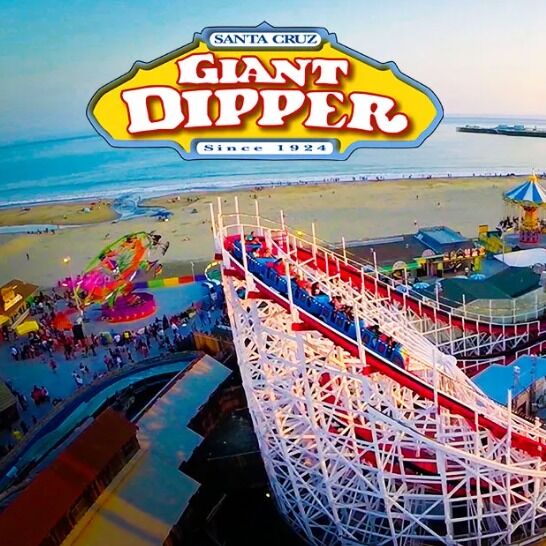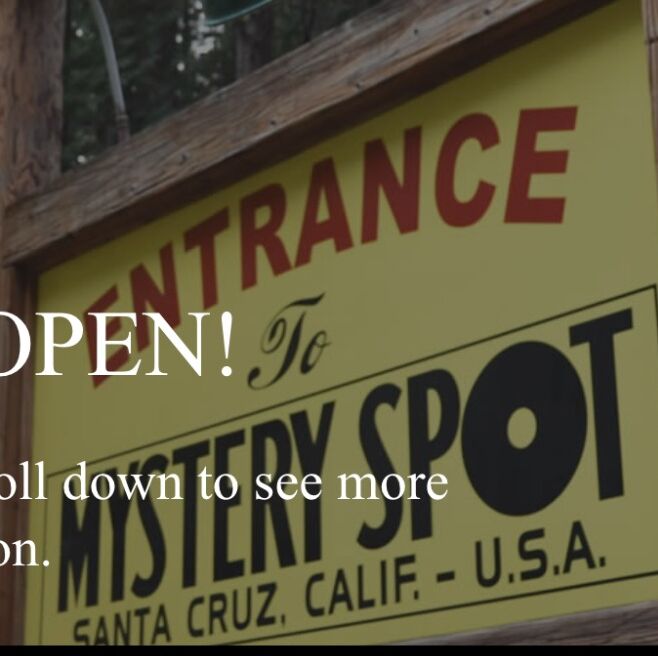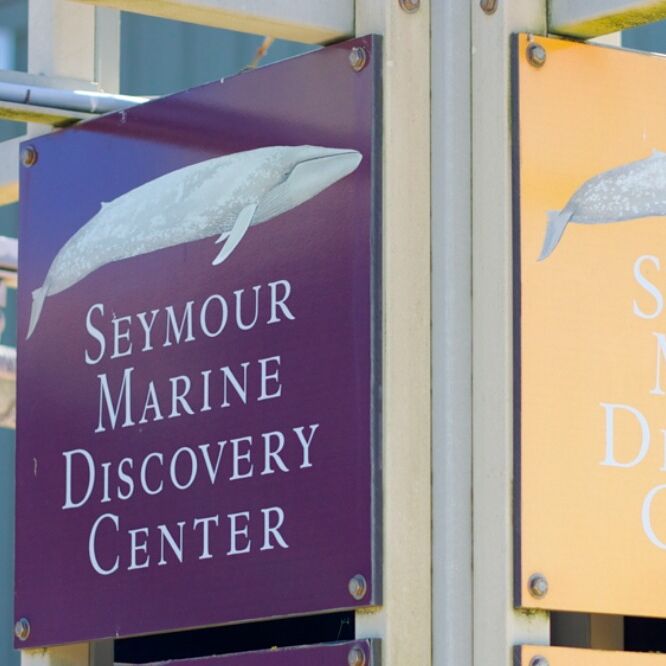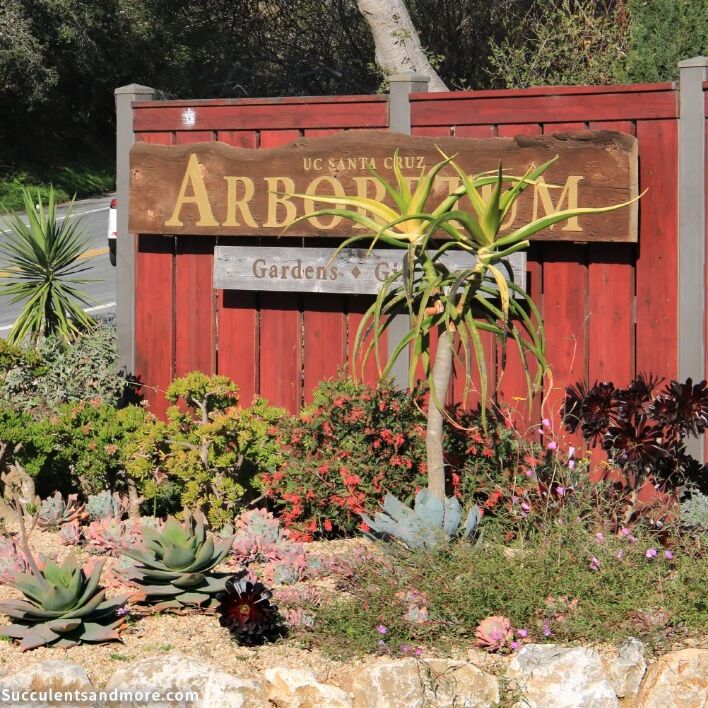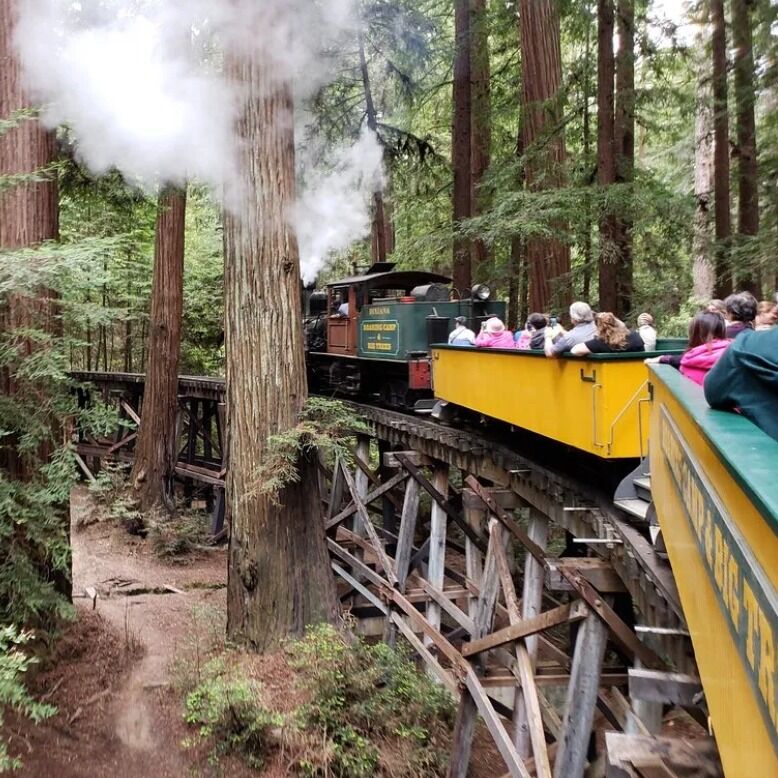*Guests will arrive by shuttle starting @ 2:30 PM, parking information is on parking page on this website *Ceremony begins at 3:30 PM *Ladies, please, no heels.

Sherry & Loren
*Guests will arrive by shuttle starting @ 2:30 PM, parking information is on parking page on this website *Ceremony begins at 3:30 PM *Ladies, please, no heels.
Sherry & Loren
Things to Do
Santa Cruz Beach Boardwalk
The Boardwalk is a classic seaside amusement park. Overlooking Main Beach in Santa Cruz, the boardwalk was built in 1907 as the “Coney Island of the West Coast” and features two national historic landmarks: the Giant Dipper Roller Coaster and the Looff Carousel. These classics join over 40 rides and amusements at this landmark attraction. Enjoy the indoor arcade at Neptune’s Kingdom, miniature golf, gift shops, and classic boardwalk treats like funnel cakes, deep-fried Twinkies®, churros, kettle corn, cotton candy, saltwater taffy, and more.
Beginning Wednesday nights at 9PM from June 20 - August 15, 2019, the Santa Cruz Beach Boardwalk continues its free weekly summer movies on the beach series. Kicking things off this year is ###a href="https://www.santacruz.org/lostboys">The Lost Boys - a Santa Cruz classic that was filmed at the boardwalk and surrounding landmarks. Other movie favorites set to hit the beach this summer are Willy Wonka and the Chocolate Factory, Legally Blonde, Ferris Bueller’s Day Off, Raiders of the Lost Ark, and more! So bring your beach towel, kick back, and enjoy!
And on Friday nights at 6:30PM and 8:30PM beginning on June 15th and continuing through August 31st, the boardwalk hosts its annual free summer concert series. The 2018 bands on the beach include Berlin starring Terri Nunn, The Motels, Los Lobos, Smash Mouth, Blue Öyster Cult, Papa Doo Run Run, and many more! See you at the Santa Cruz Beach Boardwalk this summer!
The Mystery Spot
The Mystery Spot, nestled among the redwoods in Santa Cruz, is a quirky roadside attraction known for its gravitational anomalies and optical illusions. Since opening in 1941, visitors have been captivated by the seemingly inexplicable phenomena, such as leaning buildings and balls rolling uphill. Guided tours offer interactive demonstrations that challenge perceptions of gravity, balance, and perspective. Beyond the mysteries, the spot provides a fun and family-friendly experience, attracting tourists and locals alike. It's an iconic destination that continues to spark curiosity, wonder, and lively debate about the laws of physics.
Seymour Marine Discovery Center
The Seymour Marine Discovery Center is a community-supported marine science education center of the University of California, Santa Cruz.
Mission: The Seymour Marine Discovery Center is dedicated to educating people about the role scientific research plays in the understanding and conservation of the world’s oceans.
Through our breathtaking seaside learning center, we bring the adventures and explorations of ocean science to life. Powered by the Long Marine Laboratory, a world-renowned university research facility, the Seymour Marine Discovery Center offers hands-on immersion into the world of ocean exploration and discovery. With a 20,000-square-foot visitor center, guests can touch a shark, explore the latest discoveries in ocean science, and take in the spectacular Monterey Bay, called the “Serengeti of the sea,” for its incredible diversity of marine life. The Center offers a deeper dive into the research conducted at Long Marine Lab and a chance for everyone to find their inner scientist through rich experiential learning programs including school field-trips, summer youth programs, Science Sundays, volunteer opportunities, internships, and more.
Santa Cruz Museum of Art & History
The Museum of Art and History (MAH), located in the heart of downtown Santa Cruz, is a vibrant cultural hub that celebrates creativity, community, and local heritage. Through engaging exhibitions, interactive displays, and unique public programs, the MAH brings art and history to life for visitors of all ages. The museum highlights both contemporary and historical artwork, showcasing diverse perspectives and stories that reflect Santa Cruz's eclectic identity. Visitors can explore thought-provoking installations, participate in hands-on activities, and attend community-driven events designed to foster meaningful connections. As a welcoming gathering place, the MAH inspires curiosity, creativity, and dialogue among residents and tourists alike.
UC Santa Cruz Arboretum & Botanic Garden
The UC Santa Cruz Arboretum & Botanic Garden’s mission is connecting people with plants.
With a 135 acre living museum full of rare and unique plant species, dedicated staff, committed volunteers, and a voluminous history of contributing to conservation research, the Arboretum inspires botanical stewardship in students, the community, and the world at large.
The UC Santa Cruz Arboretum & Botanic Garden’s rich and diverse collection contains representatives of more than 300 plant families of Mediterranean climates. The garden maintains collections of rare and threatened plants of unusual scientific interest. Particular specialties are world conifers, primitive angiosperms, and bulb-forming plant families. Large assemblages of plants from Australia, New Zealand, South Africa, and California natives are displayed on the grounds. Many of the species in these collections are not otherwise available for study in American botanical gardens and arboreta.
Roaring Camp
See California’s towering redwood trees from two historic railroads. Ride steam trains to Bear Mountain or Beach Trains to Santa Cruz. Visit an 1880s logging town located in the Santa Cruz Mountains of California. Between San Francisco and Monterey Bay in Felton.
Henry Cowell Redwoods State Park
Henry Cowell Redwoods State Park is located in the Santa Cruz Mountains and is most famous for the 40-acre grove of towering old-growth redwood trees. Its historical significance and spectacular scenery draw travelers from around the world. Visitors can enjoy hiking, horseback riding, picnicking, swimming, and camping on more than 4,650 acres of forested and open land. These skyscraping redwoods were admired by explorer John C. Frémont, President Theodore Roosevelt, and inspired some of California’s earliest redwood preservation efforts. Take a walk beyond the redwood grove and you’ll find four diverse habitats that this park preserves: grasslands, river/riparian, sandhills, and redwoods. The tallest tree in the park is approximately 277 feet tall, about 16 feet wide, and around 1,500 years old. Keen-eyed visitors may spot banana slugs, black-tailed deer, coyotes, bobcats, or steelhead trout.
